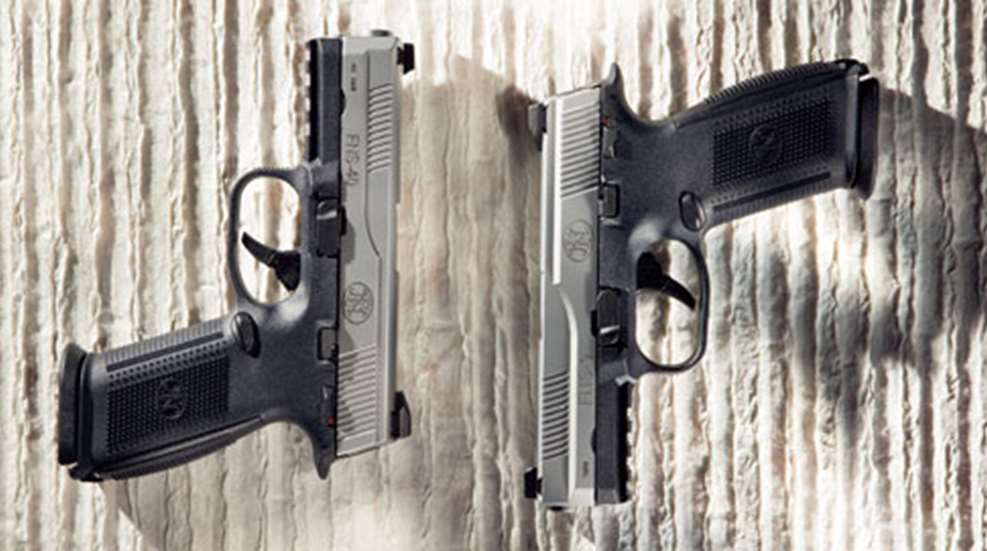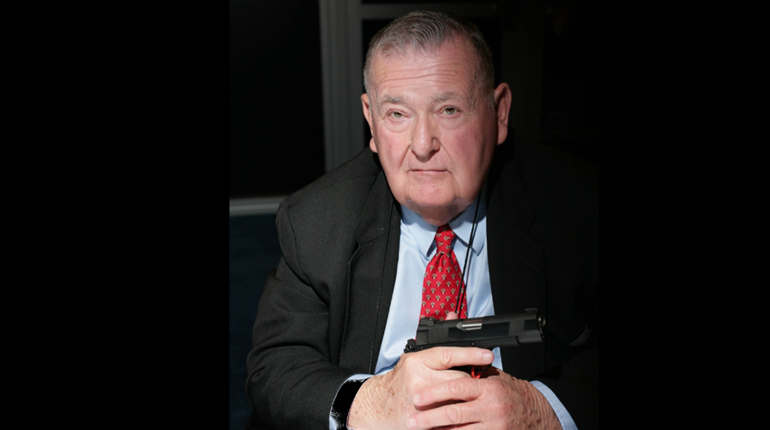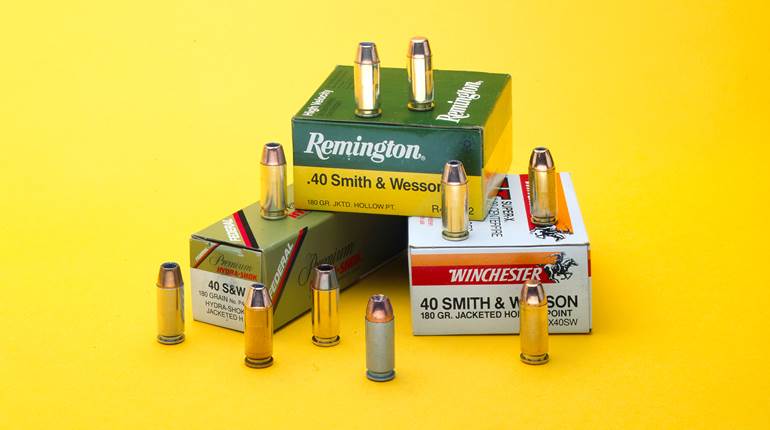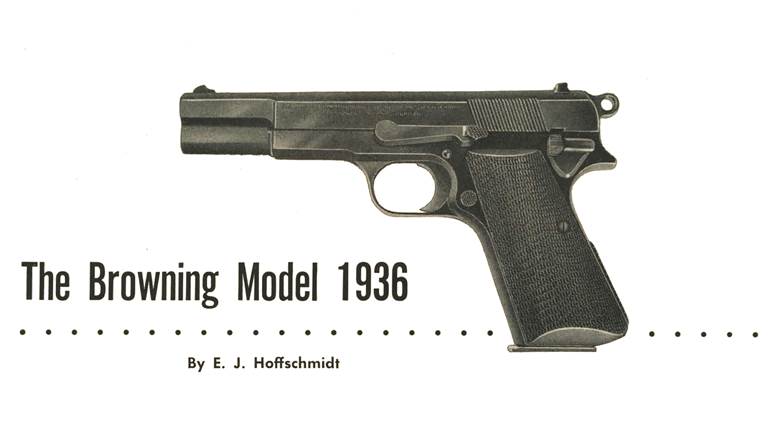
2/21/2013
For more than a century, the Belgian firm of Fabrique Nationale de Armes de Guerre (FN) has been an iconic institution in the world of armsmaking. In the early days, some of those guns came from the genius of American designer John Browning, who made frequent Atlantic crossings to conduct his European business. Browning forever owns the loyalty of America for his many military models, some of which are still in active service with U.S. forces. As a matter of fact, some U.S. service firearms come from an FN facility in South Carolina. The association of FN and the American market—military, police and sporting—remains strong. The pistol at hand is a perfect example of FN’s willingness to build guns that are specifically designed for American use. Made in the United States by an FN subsidiary called FNH USA, the pistol is known as the FNS.
It is a gun that reflects American preferences in full-size service pistols, appropriate for both police holster carry and civilian personal defense. The FNS is the latest in a modern series of FN pistols designed to compete with other major brands. After earlier unsuccessful efforts to modernize the aging classic Hi-Power and several unsuccessful polymer guns, FNH came out with a series of pistols in the popular American chamberings. Called the FNP series, these pistols lasted several years until updated into the current hammer-fired FNX line. Interestingly enough, the FNPs included a .357 SIG version, but the FNX line does not. At this point, the striker-fired FNS lineup is either 9 mm Luger or .40 S&W, but a .45 ACP is on the way. The relative size of the various cartridges means that one frame will do for 9 mm/.40 S&W, but a slightly larger one will be required to build a .45 ACP gun.
This is a preview of a completely new version of the FNS pistol, which is so new that a final suggested retail price was not available at press time—the price shown in the accompanying table is an estimate from FN. It is called the Combo Kit and our sample 9 mm Luger Combo Kit gun came in an elaborate black nylon case with designated pockets for the two extra magazines, lock, manual, etc. along with a pocket that holds a complete top half in .40 S&W. The receiver is the same for both chamberings, so you can shoot either of the popular pistol chamberings in the same gun. Just swap the uppers. You will need a different magazine, but two clearly marked .40 S&W magazines are included. In a sense, this FNS is a gun-and-a-half if you count the parts, but it is in effect two pistols—a 9 mm Luger with three magazines and a .40 S&W with two.
The implications of this approach are huge. Shooters who want to shoot a lot in practice can buy the less-expensive bulk 9 mm, then change back to .40 S&W when there’s a need for better terminal effect. A quick telephone survey of local gun shops indicated the savings in my area would run around 25 to 35 percent. You could amortize the additional top half pretty quickly at that rate. The second so-called “top half” consists of a complete slide, barrel and recoil spring with guide. The spring is calibrated for the barrel and slide—do not mix them up. Swapping calibers takes only seconds, and it can be done in less time than it takes to describe it. Unload the pistol, lock the slide to the rear and pivot the takedown lever down 90 degrees. Depress the slide lock and ease the slide assembly off the receiver. Replace the slide with the alternate one, rack it to the rear, and lock it in place. Pivot the takedown lever up 90 degrees, and you’re ready to go in another caliber.
Whether it’s a 9 mm Luger upper installed on your gun or the .40 S&W, the gun behaves the same. The operating controls are on the receiver and are ambidextrous. Up-to-safe, down-to-fire thumb safeties are at the top rear edges of the receiver and a slide lock lever is about an inch forward of that. Magazine release buttons are near the lower rear corner of the trigger guard. Push in and the magazine will drop free of the pistol.
Speaking of magazines, let’s look at what comes in the kit. There are three 9 mm magazines, which have impressed ridges on the flat sides. They accept 17 rounds for an on-board availability of 18 when there’s one in the chamber. In the case of the two .40 S&W magazines, it’s 14 rounds (plus one), and the magazine bodies do not have the ridges. Magazines of either caliber are an easy fit in the receiver, change quickly and even have an integral stop for the over-eager shooter who slams his magazines into place with undue vigor.
The pistol is a duty-size, polymer-and-steel, recoil-operated, semi-automatic pistol that weighs 25.2 ounces with the 9 mm upper and 27.5 ounces when the .40 S&W slide and barrel are in place. It measures 7.25 x 5.5 x 1.35 inches with either upper. I believe the slight weight increase with the .40 S&W upper is probably because that fast-opening, sometimes problematic cartridge needs a little more mass in the recoiling parts.
And that brings us to the major reason why the FNS is different from earlier FNP and current FNX pistols. Those earlier FNs use double-action/single-action triggers. Most competing makers offer guns with double-action-only trigger (DAO) systems, a trend that began with Glock in the mid 1980s. Many shooters have come to believe that this system is superior due to the short, smooth trigger pull on every shot. Double-action-only guns invariably use a spring-loaded striker (rather than a pivoting hammer) and partially pre-cock the striker when the slide recoils. This is exactly why FN’s engineers went with the striker-fired system on the FNS. In today’s market, the double-action-only FNS pistol is probably a more competitive pistol than the FNX with its double-action/single-action trigger system.
There are other features that are sure to be popular with the avid handgunner. The FNS’ sights are big and easy to see; they even have those highly desirable tritium inserts, one on the front and two on the rear. It is the rear sight notch that is so different. It is quite large and has typical parallel sides. But at the bottom end of the notch, the contour is a deep “V.” You sure can see those sights easily. The molded polymer receiver has a built-in accessory rail for lights or lasers on the dust cover. There are several panels of dots or ridges that serve to anchor the pistol in the shooter’s grasp. Even the company logo (an old-fashioned intertwined “FN”) on both sides of the butt is a part of the gripping surface. Finally, the kit has an extra interchangeable backstrap that permits tailoring of the butt to a greater variety of hands.
At the range, we fired several different commercial loads through the gun with each upper in place. The data shows the pistol to be a pretty good shooter, with a bit of an edge going to the gun in its mid-bore configuration—.40 S&W. This is a little surprising, because the .40 S&W is not often seen as a particularly nail-driving cartridge. In the absence of proper Ransom Rest inserts, I was forced to fire from a benched rest and that never produces really great results. Also, the DAO trigger was difficult to manage for this type of shooting. While the manual says the trigger pull weighs from 5.5 to 7.7 pounds, I would guess this one was at the high end of the range.
Functioning was absolutely 100 percent, with nary a stutter or glitch in the performance of either caliber. The trigger is different, but experienced shooters will quickly pick up on how to reset the trigger after an initial shot. That means pulling all the way through the DAO arc, holding the trigger back and then slowly allowing it go forward. A slight click means the trigger linkage inside the gun is re-set and ready to fire again. Buyers are encouraged to develop skill in doing this—it is the key to getting the most from the unique FNS “two-guns-in-one” pistol from FNH USA. This is a fine new entry from a legendary gunmaker, and I believe it will hit the mark with value-conscious shooters who demand a quality service pistol.
Manufacturer: FNH USA; (703) 288-3500; www.fnhusa.com
Caliber: 9 mm Luger or .40 S&W
Action Type: recoil-operated, striker-fired, double-action-only, semi-automatic center-fire pistol
Frame: polymer with steel inserts
Barrel(s): 4"
Rifling: 1:10" RH twist (9 mm Luger); 1:16" RH twist (.40 S&W)
Magazine: detachable box; 17-round capacity (9 mm Luger); 14-round capacity (.40 S&W)
Sights: dovetailed front and rear, Tritium three-dot highlights
Trigger: double-action-only; 7-lb., 7-oz. pull
Overall Length: 7.25"
Width: 1.35"
Height: 5.5"
Weight: 25.2 ozs. (9 mm Luger); 27.5 ozs. (.40 S&W)
Accessories: nylon tactical case, manual, padlock, extra backstrap insert, three 9 mm Luger magazines, two .40 S&W magazines, complete .40 S&W upper.
Suggested Retail Price: $1,400 (estimated)






































